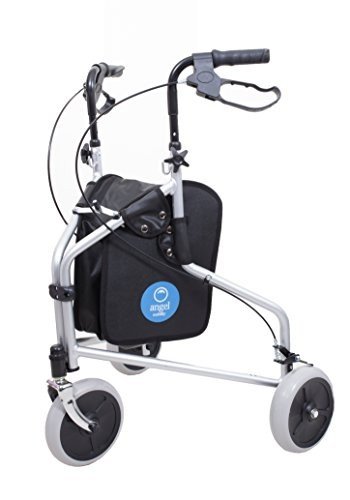Mobility Scooters: A Comprehensive Guide
Mobility scooters have become a necessary mode of transport for numerous people facing mobility obstacles. This article explores the numerous aspects of mobility scooters, including their types, benefits, functions, and a guide for potential buyers.
Understanding Mobility Scooters
Mobility scooters are electrically powered gadgets developed for people with restricted mobility. They provide a method of transportation for people who might have difficulty strolling however still wish to maintain their self-reliance. They are available in various designs and features to deal with a wide range of requirements.
Types of Mobility Scooters
Mobility scooters can usually be classified into three main types:
| Type | Description | Best For |
|---|---|---|
| Compact Scooters | These are small and lightweight, perfect for inside and short trips. | Users with limited storage space or those who take a trip often. |
| Mid-size Scooters | A balance in between portability and stability, appropriate for both indoor and outdoor use. | Those who require to cover a range of terrains. |
| Heavy-duty Scooters | Big and robust, developed for rugged outdoor use and heavier people. | Users requiring additional weight capability or going off-road. |
Secret Features of Mobility Scooters
The choice of mobility scooter often depends upon the functions that line up with specific requirements. Here are a few of the essential functions to consider:
- Weight Capacity: Mobility scooters feature various weight limitations. It is essential to select a scooter that can sufficiently support the user's weight.
- Range: The distance a scooter can travel on a single charge varies. Depending upon user requirements, one might decide for scooters with a series of as much as 40 miles.
- Speed: Most mobility scooters can reach speeds between 4 to 8 miles per hour. Consider what speed is comfy and safe for the intended environment.
- Turning Radius: A compact turning radius is vital for indoor usage, permitting simpler navigation in tight spaces.
- Battery Type: The kind of batteries used can affect the scooter's efficiency. Lead- invalid scooters uk and lithium-ion batteries are the most common.
Advantages of Using Mobility Scooters
The benefits of mobility scooters extend beyond simply transport. Some crucial benefits include:
- Independence: Users can browse their environment without relying on caregivers, promoting self-reliance and confidence.
- Health Benefits: Using a scooter can encourage outside activity, resulting in physical and psychological health enhancements by lowering feelings of seclusion.
- Convenience: Scooters can easily be operated in various environments, whether indoors, in shopping center, or outdoors.
Crucial Considerations When Buying a Mobility Scooter
When acquiring a mobility scooter, a number of factors to consider can assist ensure that you choose the ideal design:
Assess Individual Needs:
- Mobility level: Consider just how much support the individual will require.
- Variety of usage: Determine where the scooter will mostly be utilized (indoors, outdoors, on rough surfaces, etc).
Test Drive:
- Always test drive several designs to discover an appropriate fit. Focus on comfort, ease of steering, and the scooter's responsiveness.
Evaluation Safety Features:
- Look for scooters with adequate security features like lights, signs, and anti-tip designs.
Inspect Warranty and Service Options:
- A trusted service warranty and offered service choices are vital for long-term usage.
FAQs about Mobility Scooters
1. How quickly do mobility scooters go?Mobility scooters typically have speeds varying from 4 to 8 miles per hour, with many developed for security instead of high-speed travel. 2. Are there weight limitations on mobility scooters?Yes, mobility
scooters come with specific weight limits, frequently ranging from
250 lbs to over 500 pounds, depending upon the design. 3. Can mobility scooters be utilized indoors?Certain models, particularly compact scooters, are particularly developed for
indoor usage and are much easier to steer in tight areas. 4. How typically do the batteries need to be replaced?Battery life can vary based upon usage, but typically, with proper care, batteries may last between 1 to 3 years before needing replacement
. 5. Are mobility scooters covered by insurance?Coverage can vary, but some insurance plans, including Medicare and Medicaid, might cover part of the expense. It's suggested to talk to specific insurance coverage companies. Mobility scooters act as a
important tool for lots of individuals, allowing them to keep
their flexibility and independence. By comprehending the various types and features of mobility scooters, people can make educated decisions tailored to their particular needs.
Whether utilized for errands, socializing, or leisurely activities, mobility scooters can boost the lifestyle for those with mobility limitations. Investing in a mobility scooter is a decision that can considerably impact an individual's life. For that reason, individuals should carefully evaluate their options and select a model that best lines up with their way of life and mobility requirements
.

